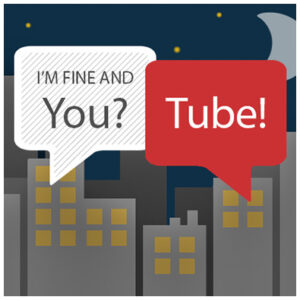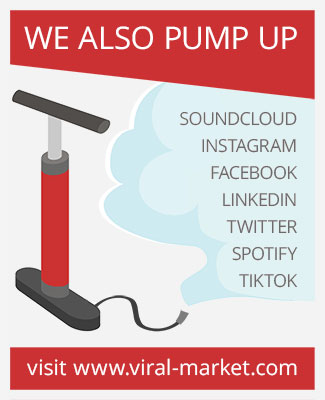Want more people to see your content on YouTube? Wondering how to “borrow” the audience of those who watch your competitors’ videos? In this article, you’ll discover a step-by-step strategy for copying your rivals’ audience effectively and ethically.
Copying Your Competitors on YouTube
Whether you already have competitors in mind or need help building a list of them, start with the following steps. With competitive copy, you can identify and evaluate other brands in your industry, so you know exactly where to focus your resources.

- Search Competitor Content on YouTube : Already have a shortlist of competitors whose audiences you want to copy? Use YouTube’s search field to browse their channels. Ideally, you want to copy channels with large audiences that are actively posting content.
- Find Channels Your Audience Watches : Copying relatively small audiences can lead to minimal organic results and limited ad delivery. To maximize results from copying your competitors’ audiences, expand your field by adding more channels to your list.
- Look for Suggested Videos : Another way to grow your copy is to identify videos that drive traffic to your channel. You can find many of these videos in YouTube Studio analytics. Go to the Content tab and look for the How Viewers Find Your Videos panel.
How to Organically Copy Your Competitors’ Audience on YouTube
Once you’ve researched your competitors’ channels, content, and related keywords, you’ll have plenty of material you can use to organically copy your rivals’ viewers. Use the following ideas to create organic content that is targeted to your competitor’s audience.
- Optimize Your Existing Content for Competitor Keywords : Does your YouTube channel already have a lot of high-quality videos? If you haven’t yet optimized your content for search, start here. By applying some of YouTube’s search engine optimization best practices, you can get your content to appear in front of your rivals’ audiences when they search for relevant terms.
- Develop New Content for Competitor Audiences : Next, use your keyword research to plan new content for your channel. Use factors like competitor rankings and search volume to prioritize topics. For example, consider prioritizing content on a high-volume search term that a competitor already ranks well for.
- Organize Your Videos into Playlists : YouTube playlists give your channel additional opportunities to rank in relevant searches, and can also help viewers discover your content more easily.
How to Copy Competitors’ Audience with YouTube Ads
You may reach parts of your competitors’ audience through organic content, but organic performance depends primarily on search volume and YouTube recommendations.
With paid advertising, you can directly copy your audience and reach the right people more efficiently. However, it’s important to note that as of early 2023, content-based audience targeting options (including detailed targeting by channel, video, topic, or keyword) only work with early and mid-funnel goals, such as awareness and consideration.
Copying Competitors’ YouTube Channels
The most direct way to get content at the top or middle of a competitor’s audience is to place ads directly on their channels. When you do this, your competitors’ viewers may see your ads before, during, or after your rivals’ videos.
To copy a competitor’s YouTube channel, start by creating a video campaign in Google Ads. Open the content settings and expand the placement options. Select YouTube Channels and enter each competitor. Google Ads automatically lists the number of subscribers and videos for each channel, which helps you gauge reach potential.
Note that when you use YouTube channel placements, Google Ads automatically prevents your ads from appearing on content from all other channels not listed. If you’re trying to buy YouTube views by targeting only one or two small channels, your campaign may not be as efficient. Make sure that your competitor’s channels that you’ve selected have enough view estimates to meet your goals for impressions, views, and other metrics.
Placing Ads on Specific Videos
If your competitors’ channels cover a wide range of topics, targeting specific videos (rather than entire channels) can help get your ads seen by a more relevant audience. To copy a video, go back to the Placements panel and select YouTube Videos. Then search for a video or paste a URL or video ID into the search bar.
Again, Google Ads automatically displays the number of views each video generates, which helps you ensure you pick enough high-traffic videos. Keep in mind that narrow targeting can help you reach a more specific audience, but limiting placements to low-traffic video can severely impact ad delivery and campaign results.
Focus on Competitor Topics
To broaden your placement options while still copying your competitors’ audiences, consider targeting video lineups. Google Ads provides preset lists of video lineups that allow you to deliver advertising content that fits certain niche interests and categories. You can hover over each option to see a description of the categories and audiences.
Keep in mind that you can combine several placement options into a single ad set on YouTube without compromising performance. In other words, you can target a combination of channels, videos and video lineups with a single ad set.
However, Google Ads warns advertisers to avoid mixing different types of content targets. In other words, you should avoid combining the ranking options above with the keyword and topic options below, or else you could drastically limit your reach.
Targeting Competitor Keywords
With YouTube ad keyword targeting, you can leverage your keyword research and place ads on relevant YouTube channels and videos. For best results, pay attention to the search intent behind each keyword and make sure it aligns with the goal of your ad.
For example, target keywords with informational intent when running top-of-the-funnel ads. Then use transactional keywords when running bottom-of-the-funnel-targeted ads.
Keep in mind that not all keywords will be suitable for this targeting option. Keywords with low search volume likely won’t generate many results and may hurt your ad delivery. Test your search volume in YouTube Studio and consider combining multiple low-volume keywords into one ad group.
To add keywords to a video ad campaign, go to your Google Ads content settings and expand the Keywords panel. Then copy and paste your keyword list. As you add keywords, keep an eye on your Google Ads campaign estimates. If the entity is too small to get the results you want, keep expanding your keyword list.
You can also use the Google Ads keyword generator to get more ideas. Paste in a competitor’s website and browse the keyword list. Click the plus sign to add any keyword or click “Add All Ideas” to add them in bulk.
However, keep in mind that keywords from a competitor’s website may not perfectly match keywords from their channels or content on YouTube. It’s always a good idea to test these ideas on competitor channels to ensure you’re targeting effectively.
Wondering if it’s ethical to add competitors’ brand names to your keyword list? You can definitely aim for brand names. However, you should avoid using competitors’ brand names in ad copy or calls to action, especially if their company names are copyrighted.
Targeting Competitor Topics
When you want to reach audiences from a wide range of competitors, targeting Google Ads topics is a good choice. This option is ideal when you want to place ads on competitor channels that are not yet on your radar. However, it’s less ideal when you want to have control over the channels or videos you target.
To select topics, open your Google Ads content settings and expand the Topics panel. Then browse the options or search for words and phrases that are relevant to your target audience. Keep an eye on impression estimates to make sure your ads have enough opportunity to show.
Create Audiences with Intent
When using Google Ads to create video awareness or consideration campaigns, you can use any of the targeting options above to refine your potential audience. However, when you use Google Ads to create video conversion campaigns, your targeting options are much more limited.
Custom Audiences can help you target users who are interested in your competitors. To create a custom segment, use your competitor list, search terms, or both. You can create segments based on people searching for your competitors or their search terms or people who have an interest or intent to buy from any competitor or term on your list.
When you create custom segments, you have the option to grow your audience by including your browsing history. To target your competitor’s audience, opt to expand your segment to include people who browse websites similar to yours.
Conclusions
Whether you plan to focus primarily on organic content or invest in YouTube ads, copying your competitors’ audiences can pay off for your business. From placing ads directly on your competitors’ channels and videos to integrating relevant topics and keywords into your content plan, you can get your content on YouTube to reach your rivals’ audiences.
Links and References
- Targeting Your Competitors’ Audiences on YouTube: A Strategy for Success – A comprehensive guide on using Google Ads to target competitor channels, videos, and keywords effectively.
- 6 YouTube Ad Targeting Options Every Company Should Use – Detailed insights into various YouTube ad targeting methods, including competitor channel targeting and keyword-based strategies.
- Targeting Competitor YT Channels: r/PPC – A Reddit discussion thread where PPC professionals share experiences and advice on targeting competitor YouTube channels.
- How to Target Your Ideal Audience Effectively With YouTube Ads – A video tutorial explaining how to use YouTube placements to target competitors’ audiences and avoid common pitfalls.
- How To STEAL Your Competitor’s Audience – A YouTube video offering strategies to analyze and capture your competitor’s audience effectively.
Consultant in communication and marketing, I support professionals and businesses in enhancing their online presence through tailored strategies.
With extensive experience in digital marketing, I focus on designing targeted social media campaigns and managing video promotion projects.
I conduct ongoing research on social networks, especially YouTube, analyzing its algorithms, user behavior, and content dynamics to inform effective practices.





















